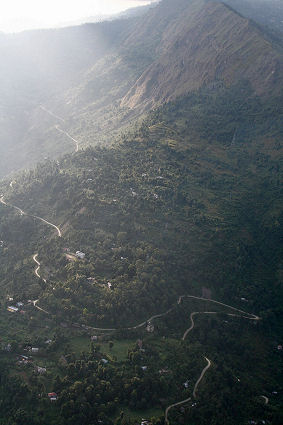
Gangtok, Sikkim |
 |
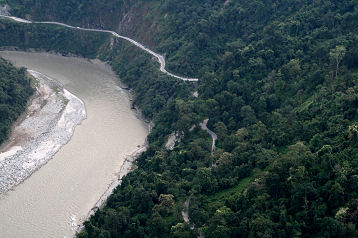 |
| Another
view of the winding road and the river that looked anything
but clean, possibly just silt. |
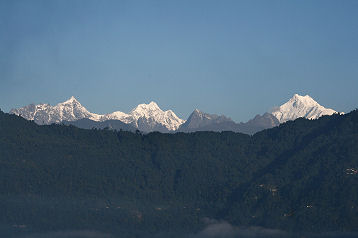 |
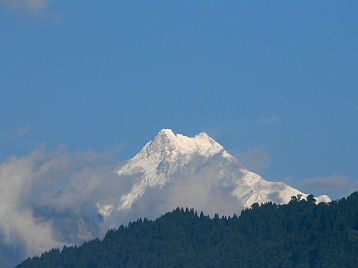 |
| Far-off snow peaked mountains seen around 6 a.m. from our hotel window. Khangchendzonga on the right. This was the only morning we could see them clearly. (zoom) | Khangchendzonga, the third highest mountain in the world, 8595m, and the highest in India. After the early morning the clouds settle in and they completely cover over the view. (zoom) |
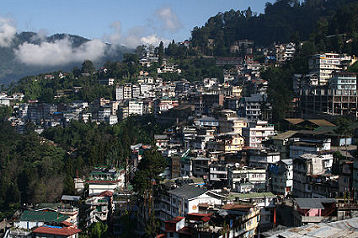 |
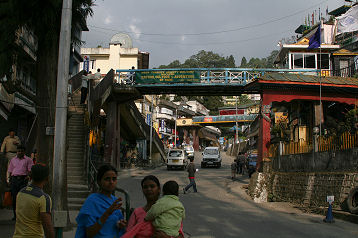 |
| View from
our hotel on our first morning in Gangtok |
Street
leading up towards our hotel from the lower part of town |
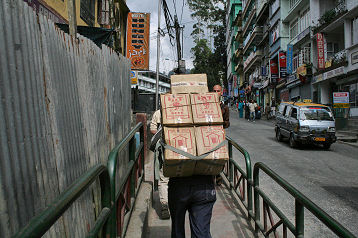 |
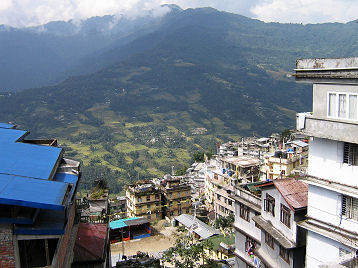 |
| Heavy
loads are seen on all
sorts of carriers, people, camels, mules, rickshaws, heavy carts pulled by small kids, bicycles. There were no rickshaws in Gangtok though. |
View from the top of the town, over towards the other side of the valley - where we were going on our first day to the Rumtek monastery. |
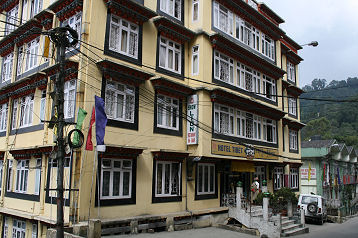 |
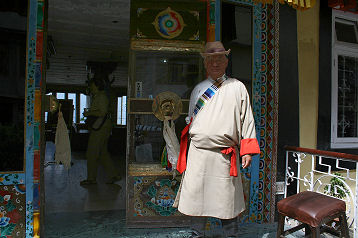 |
| Hotel
Tibet, very comfortable and a good restaurant |
The Tibetan-look doorman at our hotel |
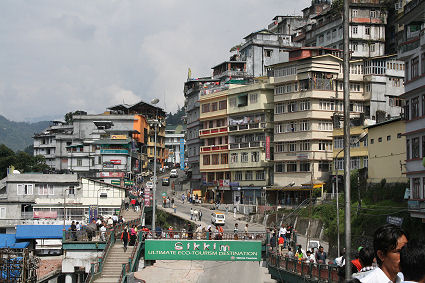 |
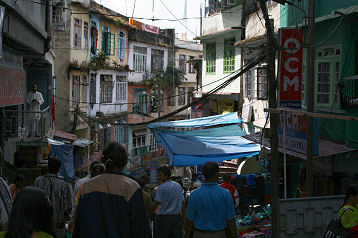 |
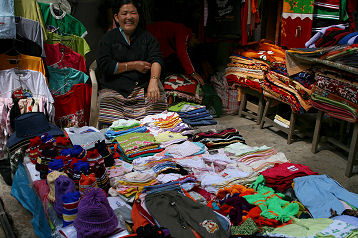 |
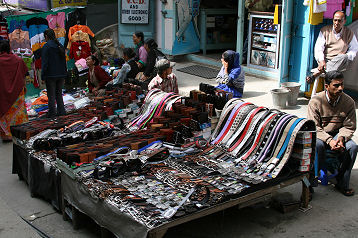 |
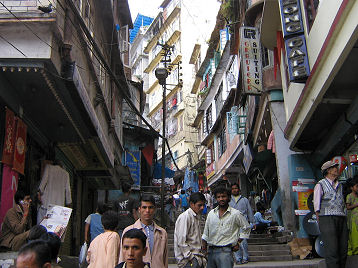 |